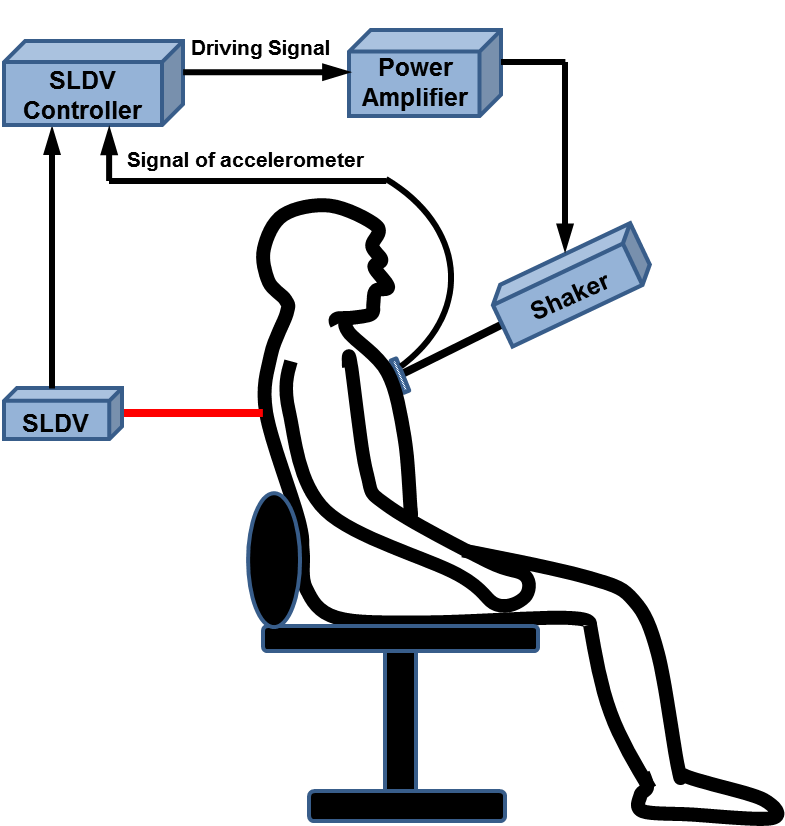Human Trials
Human Trials Heading link

Schematic diagram of experimental setup for human
- Experimental studies were carried out on two healthy human subjects after receiving appropriate Institutional Review Board (IRB) approval. The subject was seated on a chair.
- A plexiglass disk of radius 15 mm was gently pressed against the chest surface on the top of the sternum and driven by an electromagnetic shaker (ET-132, Lab-Works Inc., Mesa Costa, CA) that was connected to a power amplifier (P 3500S, Yamaha, Buena Park, CA).
- A periodic chirp with spectral content from 50 – 400 Hz was used to enable extraction of the frequency–amplitude–phase–time information. This signal was fed to the amplifier as the excitation source.
- The velocities on the back of the human subject were measured by a scanning laser Doppler vibrometer (SLDV) (PSV-400, Polytec, Irvine, CA).
- Retro reflective glass beads (nominal diameter = 45 – 63 µm) were applied to the skin surface of subjects to enhance the laser reflectivity to enable an improved signal-to-noise ratio. An impedance head (288D01, PCB Piezotronics, Depew, NY) was mounted on the disk to measure its acceleration, serving as a reference for the SLDV measurement.
- An array of points on the skin surface of the back of the subject were measured by the SLDV and processed to determine the frequency response function (FRF) of the velocity over the acceleration measured by the impedance head. There were 54 scan points on each side of the back (total of 108 scan points).